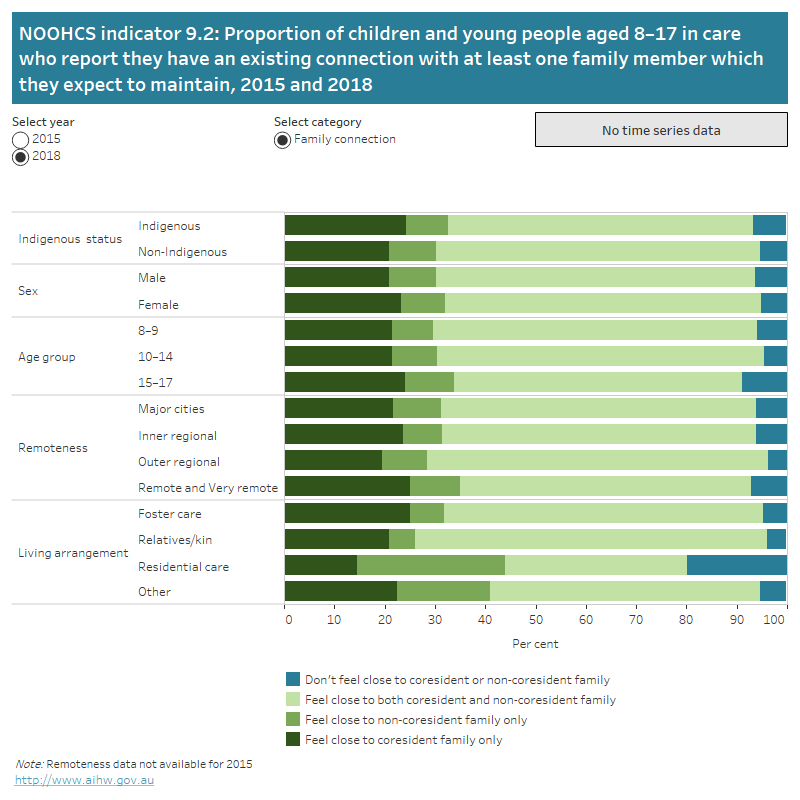9.2 Family connection
Children may be in care due to abuse or neglect, or because their family is unable to care for them (for example, due to illness or incarceration). It is important that children maintain connections with family members during their time in care.
This indicator uses results from a national survey of children in care; those whose care arrangements have been ordered through the Children’s Court, where parental responsibility for the child or young person has been transferred to the Minister/Chief Executive.
Children were asked about how close they felt (that is, how important and special they are to you) to the people they are living with now (co-resident family) and family they don’t live with (non-co-resident family).
Trend data: For all indicator displays, the yearly trend is limited to indicators with 3 or more years (including the current year) of comparable time series data. To see the trend click on “Yearly Trend” button on the display. Where 3 or more years of comparable data including the most recent year is not available, a “No time series data” message is shown on the display.
The horizontal stacked bar graph shows the proportion of children and young people aged 8–17 in care who report they have an existing connection with at least one family member which they expect to maintain, by Indigenous status, sex, age group, remoteness and living arrangement. Each bar presents the proportion of children in each family connection category. Data can be selected by years 2015 or 2018.

Source: AIHW Out-of-home care survey national dataset 2015 and 2018
See the supplementary data tables for further information and footnotes about these data.
Indicator technical specifications
The information below provides technical specifications for the summary indicator data presented in the quick reference guide.
| Definition | Data source | |
|---|---|---|
| Numerator | Number of children aged 8-17 years in care who report they feel close to their coresident family, non-coresident family, or both | AIHW Out-of-home care survey national dataset |
| Denominator | Number of responding children aged 8-17 years in the reference period | AIHW Out-of-home care survey national dataset |
Explanatory notes
Data are sourced from a national survey of children in care. Further interpretive information for the indicators, and background information on the survey, is provided in the AIHW report The views of children and young people in out-of-home care: overview of indicator results from second national survey, 2018.
Children ‘in care’ are those who were residing in out-of-home care (including foster care, relative/kinship care, family group homes, residential care and independent living), whose care arrangements had been ordered by the relevant Children’s Court and where the parental responsibility for the child had been transferred to the Minister or Chief Executive, and who had been on a relevant court order for three months or more. Please note that the titles of the relevant ‘Children’s Courts’ may vary across states/territories.
Children aged 8-17 years were asked two questions ‘How close do you feel to the people you are living with now?’ and ‘How close do you feel to family members who you don’t live with?’ ‘How close’ was described as ‘how important and special they are to you’. The questions had four response categories: Very close, Fairly close, A bit close, Not close at all.
‘Family’ was broadly self-defined by the responding children. Children in care may not distinguish between biological and non-biological relationships, and may feel equally close to their birth family, carer family and others in their current placement.
The numerator includes children who reported ‘Very close’ or ‘Fairly close’ to one or both questions.
The numerator and denominator exclude children with a ‘not stated’ response to one or both questions.


